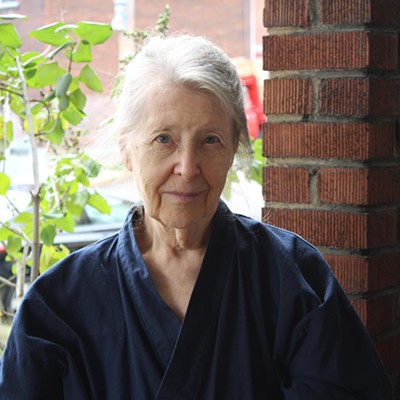"What I see is life looking at me," narrates Trinh T. Minh-ha in her first film, 1982's "Reassemblage." "I am looking through a circle into a circle of looks."
"Reassemblage" announced an important new voice in experimental cinema. The film, shot in a Senegalese village, transcended documentary by questioning the very genre: Intent to avoid becoming "the eager observer [who] collects samples and has no time to reflect upon the media used," Trinh composed the 40-minute film largely of brief close-ups of people, animals, activities and objects. She divorced picture from sound, sometimes showing silent footage, sometimes a black screen with a soundtrack, and never synchronizing the two. Rather than simply taking viewers on a ride, she insisted that they think about what they saw and heard. Her narration was scant, elliptical, epigrammatic. "Creativity and objectivity," she noted, "seem to run into conflict."
But Trinh never claimed to be objective, and her creativity doesn't seem to have flagged in the years since. A feminist theorist, writer, composer and cultural critic, she's continued to make films and videos that explore new ways of seeing and hearing. On Mon., Sept. 12, she kicks off a Carnegie Mellon University lecture series titled Aesthetics Out of Bounds: History and Art Outside the Frame.
Melissa Ragona, a CMU art professor who organized the series and accompanying seminar along with associate English professor Michael Witmore, says Trinh was chosen not only for her ability to transcend the borders of traditional artistic disciplines, but also because she successfully joins theory and practice.
That's more rare than you might imagine. Few filmmakers, even experimentalists, write much theory, and most theorists don't make movies. Trinh's approach makes her the sort of filmmaker whose work gets more attention in academic journals than in the mainstream press. For instance, there's 1989's Surname Viet Given Name Nam, a feature-length metadocumentary whose off-centered images and complex soundtrack question the very possibility of "documenting" the experiences of Third World women, and suggest the risks of trying.
But while the Vietnamese-born Trinh's films are challenging, they're hardly inaccessible, and often lauded for their formal beauty. Chicago Reader critic Jonathan Rosenbaum called her fiction film A Tale of Love "[a]t times a frankly erotic film that interrogates its own eroticism."
More recently, Trinh has switched from film to digital video. The digitally shot Night Passage is an homage to Night on the Milky Way Train, the classic children's science-fiction book by Kenji Miyazawa. Night Passage, made with Trinh's frequent collaborator Jean Paul Bourdier, tells of three young friends traveling on the train between life and death. The video (which is unavailable for preview) is framed through the train's window.
Despite the varying subject matter in her works, Trinh -- a professor of women's studies, film studies and rhetoric at the University of California, Berkeley -- continues to question her media. She has said she employs digital technology not to reinforce cinema's emphasis on the visual, but "to propel image making into other realms of the senses and awareness." A chief technique is the layering of multiple images and sound schemes, which to Trinh means "working intensely with time and with the indefinite coexisting layers of past, present and future."
However, she's also wary of the seductions of the digital realm, where instantaneous image-making and info-retrieval can lead too easily into mere expediency and commercialism. "For the question is not so much to produce a new image as to provoke, to facilitate, and to solicit a new seeing," she says in her 2005 book The Digital Film Event. "Science without conscience, politics without ethics, technology without poetry result in deadly short-circuits."













